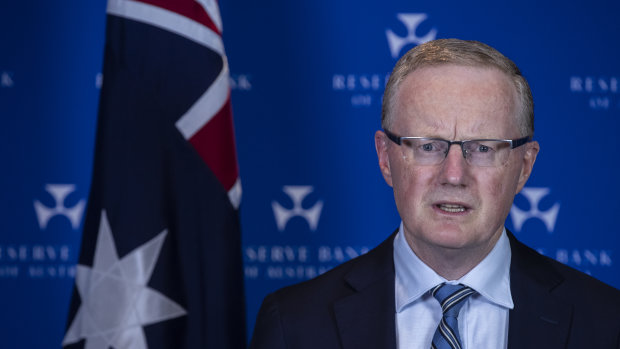Trickle-down policy settings aren't working
The effects of blunt monetary policy have created a divide between the have and have-nots, and the populist agitation could lead to more binary policy alternatives, and unstable investment conditions.
The storming of the US Capitol by a mob of rioters is yet another symptom of the gaps that have opened up in society over an extended period.
Inequality has increased and trickle-down policy settings haven’t worked, and both the policy settings and their broader social impact, via the rise of populism, have implications for markets.

Thirteen years ago, lawmakers and central bankers responded to a financial crisis that became an economic crisis by unleashing significant taxpayer-funded support and slashing of interest rates.
The years since have seen a constant and concerted fiscal consolidation among all major developed economies. Australia’s budget deficit contracted from 4 per cent of GDP to 0 per cent, the US moved from -9 per cent of GDP to -2 per cent and Germany from -4 per cent to a surplus of 2 per cent.
With contractionary fiscal policy in place, disposable income has been under pressure via tax settings. Moreover, disposable income has been pressured, especially in the middle and working classes.
In the face of this fiscal consolidation, monetary policy has become the active policy tool. Cash rates stayed low, and unorthodox monetary tools have been deployed.
But monetary policy is a blunt tool, and it is important to look at why it is being used and the tertiary effects that need to be complemented with other policies.
The benefits of central bank activity have not been uniform. Fiscal policy to date has not endeavoured to reshape the blunt uplift by reshaping the landscape to “build out from the middle”.
It must be said, JobKeeper and JobSeeker have gone some ways to achieving this benefit in Australia under the enormous strain inflicted by the pandemic and shutdowns.
In the US, the Democrats' plan is to provide tax cuts and greater assistance to the working and middle class. It is also a chance to increase taxes on high-income earners (and corporates) at a later date.
Asset inflation
The major central banks' balance sheets have grown from $US7 trillion during the GFC to $US21 trillion in 2018, before surging to $US28 trillion as at the end of 2020.
The bond purchases have added to the global excess of savings, which have been seeking yield in listed and unlisted assets, pushing up asset prices.
US President Donald Trump cut corporate tax rates and implemented tariffs. The tax cuts essentially funded share buy-backs. Great if you own shares. Most people don’t. The social safety net via healthcare is negligible.
Housing prices have also been rising. For those who own houses that’s great though of limited income use, as one is unlikely to cash in one’s prime residence. For those that don’t own their house, rents go up – and squeeze disposable income.
In 2007, the mean income in the US for the lowest quintile stood at $US11,500. In 2019, it was $US13,775. By contrast, the top quintile was $US167,900 in 2007 and $US234,000 in 2019.
A growing divide
The rise in populism has grown from the divide between the haves and have-nots. The consumers with the greatest propensity to consume are the aspirational middle class and the working class. These are the ones being left behind.
Asset price inflation will continue to be linked to central bank activity, unless the consumer kicks in and plays a more significant role. Although we have an excess of global savings, we do not have an excess of global consumption.
The relationship between falling asset prices and softening consumer prices is strong. The decline in US house prices over the 2006 to 2009 period caused 40 per cent of the decline in US consumption over the same period, relative to trend, as construction collapsed, availability of credit froze, jobs were lost in a self-perpetuating cycle.
With that lesson learned, it explains why central banks have emphatically responded to threats to asset prices, over the past decade, by injecting liquidity into the financial system. Ensuring that, unlike the GFC, a financial crisis does not become an economic crisis.
Thus, central banks have been the major avenue to provide stimulus, by cutting borrowing costs and adding incentives for capital to seek returns in assets and projects, via quantitative easing.
The benefit of lifting the consumer is that this consumption generates income, jobs and activity directly. Company revenue improves, share prices lift because of the earnings not just because of an expansion in the price-earnings multiple due to the hunt for yield.
Portfolio risk
Democracies are more fragile than perhaps we had been thinking. That’s not to say that democracies will be toppled but they are a fertile environment for a shift towards autocracy or away from free-floating financial markets.
Indeed Australia has not been immune from this in our short history. In the post-World War I, Spanish flu civil unrest, General Monash had to refute calls for him to take control “and [by doing so] undo the very democratic processes [he] fought for.”
The continuation of populist agitation leads to more binary policy alternatives, and unstable investment conditions. The “risk on, risk off” outcome means investors will have to consider carefully correlation risk across asset classes and currencies.
Chris Dickman is a senior portfolio manager at Altius Asset Management
No comments:
Post a Comment